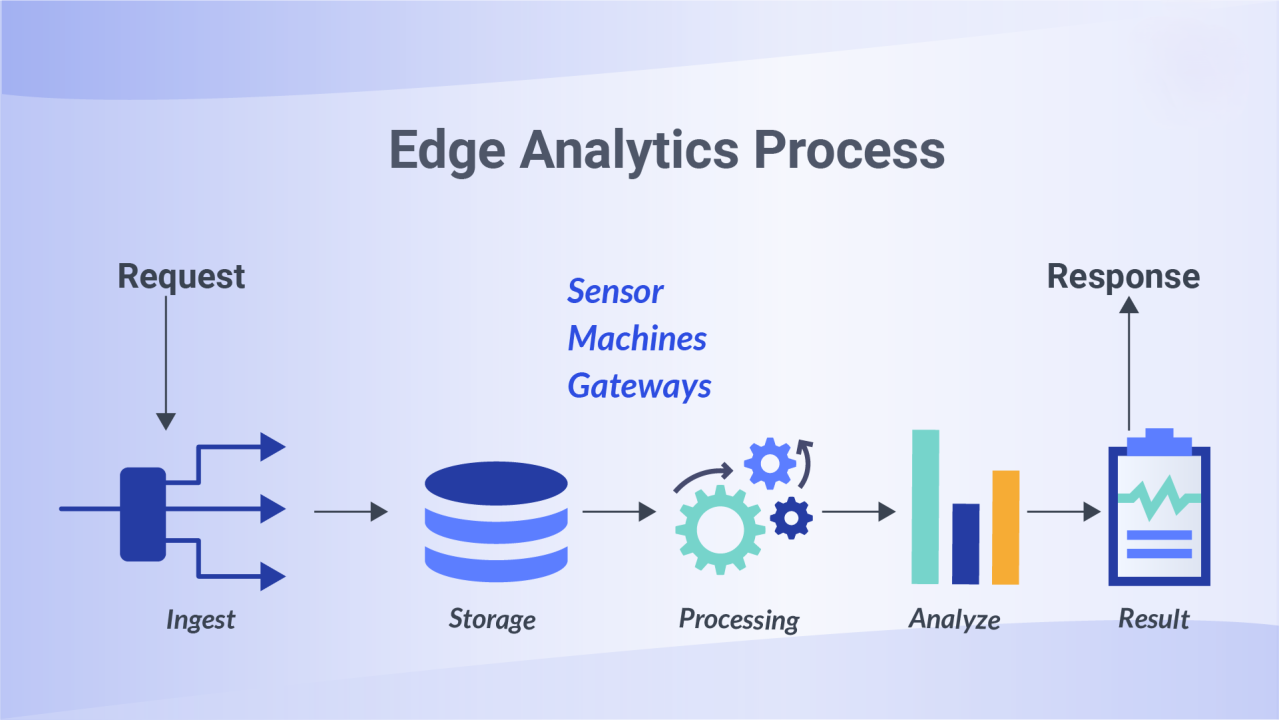Edge Analytics Market Analysis:
The Edge Analytics Market has emerged as a critical component in the broader landscape of data analytics, driven by the increasing need for real-time data processing and decision-making at the edge of networks. Edge analytics refers to the practice of processing data near the source of data generation rather than relying on centralized cloud-based systems. This shift is primarily motivated by the exponential growth of Internet of Things (IoT) devices, which generate vast amounts of data that require immediate analysis to derive actionable insights.
The market is characterized by its ability to enhance operational efficiency, reduce latency, and improve bandwidth utilization, making it an attractive solution for various industries including manufacturing, healthcare, retail, and smart cities.
Market Key Players:
Several key players dominate the Edge Analytics market landscape. These include tech giants such as IBM, Microsoft, Cisco Systems, and Amazon Web Services (AWS), which offer robust edge computing solutions integrated with advanced analytics capabilities. Additionally, specialized companies like FogHorn Systems and Cloudera are also significant contributors to this market segment. These organizations focus on developing innovative edge analytics platforms that cater to specific industry needs while ensuring scalability and security. The competitive landscape is further intensified by continuous investments in research and development aimed at enhancing product offerings and expanding market reach.
Download Free Exclusive Sample PDF:
https://www.marketresearchfuture.com/sample_request/3192
Market Segmentation:
The Edge Analytics market can be segmented based on several criteria including deployment type, application area, organization size, and region. Deployment types typically include on-premises solutions versus cloud-based solutions; however, hybrid models are gaining traction due to their flexibility. Application areas encompass sectors such as manufacturing (predictive maintenance), healthcare (patient monitoring), retail (customer behavior analysis), and smart cities (traffic management). Furthermore, organizations can be categorized into small and medium-sized enterprises (SMEs) versus large enterprises; each segment has distinct requirements regarding scalability and resource allocation. Regional segmentation reveals significant variations in adoption rates across North America, Europe, Asia-Pacific, Latin America, and the Middle East & Africa.
Market Drivers:
Several factors drive the growth of the Edge Analytics market. Firstly, the proliferation of IoT devices necessitates real-time data processing capabilities to manage vast streams of information effectively. Secondly, businesses are increasingly recognizing the importance of reducing latency in decision-making processes; edge analytics allows for immediate insights without relying on distant cloud servers. Thirdly, regulatory compliance concerning data privacy is pushing organizations towards localized data processing solutions that minimize risks associated with transferring sensitive information over networks. Lastly, advancements in machine learning algorithms are enabling more sophisticated analyses at the edge level.
Market Opportunities:
The Edge Analytics market presents numerous opportunities for innovation and growth. As industries continue to embrace digital transformation initiatives, there is a growing demand for tailored edge analytics solutions that address specific operational challenges. For instance, sectors like agriculture can leverage edge analytics for precision farming techniques that optimize resource usage based on real-time environmental conditions. Additionally, emerging technologies such as 5G connectivity will further enhance edge computing capabilities by providing faster data transmission speeds and lower latency levels. This opens up new avenues for applications in autonomous vehicles and remote monitoring systems.
Regional Analysis:
Regionally speaking, North America currently holds a dominant position in the Edge Analytics market due to its early adoption of advanced technologies coupled with a strong presence of key players in this space. The United States leads this trend with substantial investments in IoT infrastructure across various sectors including healthcare and manufacturing. Europe follows closely behind as countries like Germany and France invest heavily in smart city initiatives that rely on effective edge analytics solutions. Meanwhile, Asia-Pacific is expected to witness rapid growth owing to increasing urbanization rates and government support for digital transformation projects across nations like China and India.
Get Complete Report Details:
https://www.marketresearchfuture.com/reports/edge-analytics-market-3192
Industry Updates:
Recent developments within the Edge Analytics industry highlight ongoing trends towards integration with artificial intelligence (AI) technologies to enhance analytical capabilities further at the edge level. Companies are increasingly focusing on developing AI-driven platforms that can autonomously analyze data streams without human intervention while ensuring compliance with privacy regulations through localized processing methods. Moreover, partnerships between technology providers and industry-specific stakeholders are becoming more common as organizations seek comprehensive solutions tailored to their unique operational environments.
Contact Us:
Market Research Future (Part of Wantstats Research and Media Private Limited)
99 Hudson Street, 5Th Floor
New York, NY 10013
United States of America
+1 628 258 0071 (US), +44 2035 002 764 (UK)


